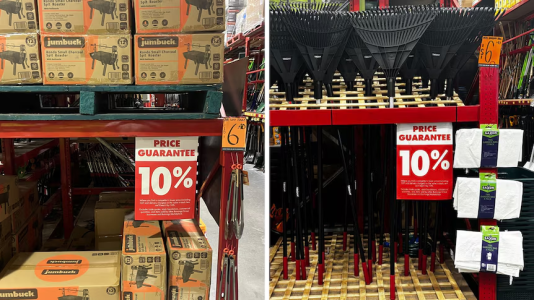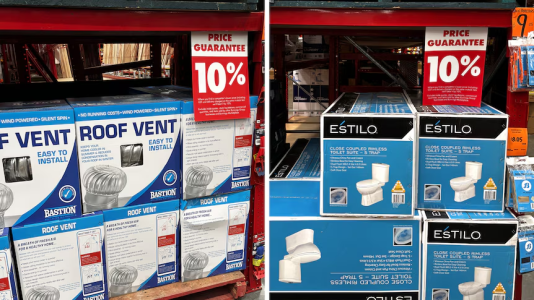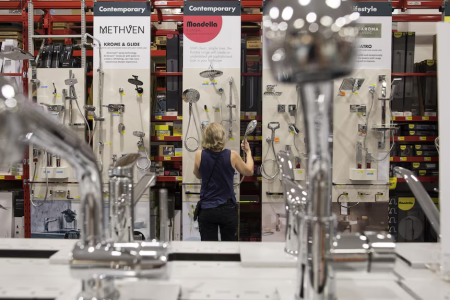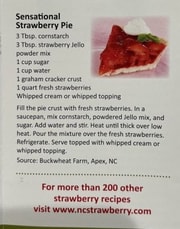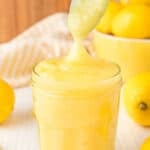Bunnings boasts about its price-beating guarantee but for 9,000 products there is a catch
By
ABC News
- Replies 24
It's the Bunnings slogan everyone's heard — a promise to beat a competitor's price on the same stocked item by 10 per cent.
But there's a catch to the hardware giant's famous price guarantee.
While Coles and Woolworths have been under intense scrutiny, Bunnings — which has a much higher profit margin than either of them — has mostly escaped attention.
With its massive reach, how Bunnings sets prices and competes matters to millions of Australians.
But are customers actually getting the deal they think they are?
On TV, Bunnings advertised a Citeco 0.9-metre, three-step ladder alongside its promise: "Where you find a competitor's lower price on the same stocked item, we'll beat it by 10 per cent."
In-store, a 0.9m Citeco ladder sits behind a large red sign with the same commitment: Find a competitor with the same in-stock item — 10 per cent off.
But there is no competitor that stocks the Citeco 0.9m ladder.
That's because Citeco is a Bunnings home brand. Not only is it manufactured for Bunnings, the hardware giant also owns the Citeco trademark.
It's far from the only item.
Through the trademark register and questions to Bunnings, Four Corners has found the hardware giant has more than 9,000 home-brand products.
In Bunnings aisles around the country, many of these home-brand products are sold alongside signs with its 10 per cent promise. Products like:
A Jumbuck spit roaster or a Trojan rake.
A Bastion roof vent or an Eśtilo toilet.
Even a Bunnings bucket.
You can't find these products cheaper anywhere else because they're made for Bunnings.
"I think it's misleading," says John Dahlsen, a competition lawyer and former chairman of Woolworths, who now chairs his family's hardware store and building business.
"The 10 per cent beat thing is illusionary," he says.
Working out what is a Bunnings home brand isn't simple.
Its ownership of Citeco (the brand behind the ladder) isn't clearly disclosed on the packaging, the products themselves or in-store. And on the Bunnings website they are sold like any other brands.
You have to search Australia's trade mark register or read parent company Wesfarmers' annual report before Bunnings's ownership becomes apparent.
Bunnings's brands include everything from Jumbuck barbecues and Craftright toolboxes to Marquee outdoor furniture, Mondella toilets and Happy Tails pet supplies.
Some home brands, such as Trojan tools, even have their own website.
Competition regulator, the ACCC, told Four Corners retailers were not legally required to identify home-brand products but, if an item was marketed as though it was produced by a third party, it might amount to misleading or deceptive conduct.
Bunnings says it complies with all legal and regulatory requirements for product labelling.
The company says it "empowers" staff to take a "common sense approach" and will price match on similar items. It makes no mention of this in the "Price policy" on its website.
"We reduce prices on our exclusive products to respond to competition in the market if the similarities of the relevant product are strong," Bunnings told a Senate inquiry last year.
For John Dahlsen, that's a meagre promise and one that is highly subjective.
He says if a consumer was to find a similar item, which is not always easy, and then is successful in convincing a Bunnings staff member to apply the price guarantee, then the hardware giant still only has to reduce the price on one item.
Matt Steen, from consumer advocacy group Choice, says Bunnings should be more transparent about how shoppers can realistically get its 10 per cent price guarantee.
"Incorporation of some kind of labelling [that it is a home brand] into their packaging and products would be really useful," he says.
Bunnings said it uses "a mix of owned brands and exclusive brands to differentiate our offer and give customers choice".
Branding expert Camey O'Keefe says she believes the price guarantee is more about Bunnings wanting to shape customers' perceptions.
"What I think it does do is add a layer of reassurance that perhaps subconsciously people are like, 'Oh, I can trust that Bunnings will offer me the best price in the market for any given product.'"
In 2000, Bunnings had 43 stores generating sales of $1.4 billion. Today, the Bunnings Group has 310 stores under its famed hardware brand in Australia, plus other chains such as Tool Kit Depot and Beaumont Tiles. Together, they bring in almost $19 billion in revenue a year for its parent company, ASX-listed Wesfarmers.
And while the big two supermarkets, Coles and Woolworths, have been criticised for being among the most profitable in the world, their margins are dwarfed by Bunnings's.
Bunnings has a profit margin of 16.8 per cent, compared to 9.9 per cent for Woolworths and 8.9 per cent for Coles.
Politicians have talked tough on supermarkets. The prime minister promised to make price gouging illegal. The Coalition wanted to go even further and break up the duopoly.
On Bunnings, though, Treasurer Jim Chalmers is hedging his bets.
"I'm aware that people have raised concerns about Bunnings," he said.
"Our primary focus is supermarkets, but we've given the ACCC the resources that they need and the ability to recommend to us a broader focus, if that's warranted."
Sydney University's Clinton Free did his doctorate at Oxford University on market power.
He says while there's been great attention on the supermarkets, Bunnings has flown under the radar.
"Having a very trusted brand, having a CEO without an enormous public profile, it meant that it's not been subject to scrutiny in the same way that, for example, Coles and Woolworths have."
Bunnings's healthy margins have led some to question just how cheap it really can be and if a lack of competition helps it control prices.
There's no data to independently verify this claim, so Four Corners ran its own limited survey over 95 basic hardware items.
It's a rough basket of goods, and by no means a complete analysis, but what we found surprised us.
The difference between Bunnings and its local rivals is literally small change.
When we compared:
But just how much "market power" Bunnings has is difficult to pin down.
The company claims its market share is just 17 per cent. This figure is impossible to verify as Bunnings won't release detailed data.
It's able to claim to have such a small share of the market because it says it competes against almost every major retailer in the country. Bunnings says its rivals include Coles, Woolworths, Kmart, Myer, JB Hi-Fi, Amazon, eBay, Kogan, PetStock, Petbarn and Aldi. It even lists Spotlight, which is best known for selling fabric, curtains, and craft supplies.
Market-research firm IBISWorld puts the retail hardware market share of Bunnings's parent company Wesfarmers at 33 per cent, while noting it's "far and away the leading player in the hardware retailing space".
John Dahlsen claims its market power is closer to 70 per cent — a figure Bunnings disputes. That would be equivalent to Coles and Woolworths combined.

Dahlsen says while the Australian supermarket sector is often criticised for its lack of competition, cashed-up international players such as Costco and Aldi are at least present in the market.
For the hardware sector, he says, Bunnings has no such rivals.
"To be brutal, I think they [Bunnings] are a quasi-monopoly," he says.
Professor Free says when one company comes to dominate a market, consumers suffer.
"A company with 30 per cent market share exercises substantial market power. At 60 or 70 per cent market share, you can dictate prices, you can dominate suppliers, and you can really repel new entrants and make it very difficult for others to compete," he says.
Bunnings said in a statement that it was committed to delivering low prices.
"Bunnings is also committed to working with suppliers and taking a rational approach to volume and price fluctuations, in order to support suppliers and their costs," it said.
"We make significant investments in training our team members and operating our business to deliver lowest prices to our customers."
But there's a catch to the hardware giant's famous price guarantee.
While Coles and Woolworths have been under intense scrutiny, Bunnings — which has a much higher profit margin than either of them — has mostly escaped attention.
With its massive reach, how Bunnings sets prices and competes matters to millions of Australians.
But are customers actually getting the deal they think they are?
Price guarantee
Say you wanted to buy a ladder.On TV, Bunnings advertised a Citeco 0.9-metre, three-step ladder alongside its promise: "Where you find a competitor's lower price on the same stocked item, we'll beat it by 10 per cent."
In-store, a 0.9m Citeco ladder sits behind a large red sign with the same commitment: Find a competitor with the same in-stock item — 10 per cent off.
But there is no competitor that stocks the Citeco 0.9m ladder.
That's because Citeco is a Bunnings home brand. Not only is it manufactured for Bunnings, the hardware giant also owns the Citeco trademark.
It's far from the only item.
Through the trademark register and questions to Bunnings, Four Corners has found the hardware giant has more than 9,000 home-brand products.
In Bunnings aisles around the country, many of these home-brand products are sold alongside signs with its 10 per cent promise. Products like:
A Jumbuck spit roaster or a Trojan rake.
A Bastion roof vent or an Eśtilo toilet.
Even a Bunnings bucket.
You can't find these products cheaper anywhere else because they're made for Bunnings.
"I think it's misleading," says John Dahlsen, a competition lawyer and former chairman of Woolworths, who now chairs his family's hardware store and building business.
"The 10 per cent beat thing is illusionary," he says.
Working out what is a Bunnings home brand isn't simple.
Its ownership of Citeco (the brand behind the ladder) isn't clearly disclosed on the packaging, the products themselves or in-store. And on the Bunnings website they are sold like any other brands.
You have to search Australia's trade mark register or read parent company Wesfarmers' annual report before Bunnings's ownership becomes apparent.
Bunnings's brands include everything from Jumbuck barbecues and Craftright toolboxes to Marquee outdoor furniture, Mondella toilets and Happy Tails pet supplies.
Some home brands, such as Trojan tools, even have their own website.
Competition regulator, the ACCC, told Four Corners retailers were not legally required to identify home-brand products but, if an item was marketed as though it was produced by a third party, it might amount to misleading or deceptive conduct.
The company says it "empowers" staff to take a "common sense approach" and will price match on similar items. It makes no mention of this in the "Price policy" on its website.
"We reduce prices on our exclusive products to respond to competition in the market if the similarities of the relevant product are strong," Bunnings told a Senate inquiry last year.
For John Dahlsen, that's a meagre promise and one that is highly subjective.
He says if a consumer was to find a similar item, which is not always easy, and then is successful in convincing a Bunnings staff member to apply the price guarantee, then the hardware giant still only has to reduce the price on one item.
Matt Steen, from consumer advocacy group Choice, says Bunnings should be more transparent about how shoppers can realistically get its 10 per cent price guarantee.
"Incorporation of some kind of labelling [that it is a home brand] into their packaging and products would be really useful," he says.
Bunnings said it uses "a mix of owned brands and exclusive brands to differentiate our offer and give customers choice".
Branding expert Camey O'Keefe says she believes the price guarantee is more about Bunnings wanting to shape customers' perceptions.
"What I think it does do is add a layer of reassurance that perhaps subconsciously people are like, 'Oh, I can trust that Bunnings will offer me the best price in the market for any given product.'"
Building big profits
Bunnings's ability to promote itself as the cheapest has helped the hardware giant grow rapidly over the past 25 years.In 2000, Bunnings had 43 stores generating sales of $1.4 billion. Today, the Bunnings Group has 310 stores under its famed hardware brand in Australia, plus other chains such as Tool Kit Depot and Beaumont Tiles. Together, they bring in almost $19 billion in revenue a year for its parent company, ASX-listed Wesfarmers.
And while the big two supermarkets, Coles and Woolworths, have been criticised for being among the most profitable in the world, their margins are dwarfed by Bunnings's.
Bunnings has a profit margin of 16.8 per cent, compared to 9.9 per cent for Woolworths and 8.9 per cent for Coles.
Politicians have talked tough on supermarkets. The prime minister promised to make price gouging illegal. The Coalition wanted to go even further and break up the duopoly.
On Bunnings, though, Treasurer Jim Chalmers is hedging his bets.
"I'm aware that people have raised concerns about Bunnings," he said.
"Our primary focus is supermarkets, but we've given the ACCC the resources that they need and the ability to recommend to us a broader focus, if that's warranted."
Sydney University's Clinton Free did his doctorate at Oxford University on market power.
He says while there's been great attention on the supermarkets, Bunnings has flown under the radar.
"Having a very trusted brand, having a CEO without an enormous public profile, it meant that it's not been subject to scrutiny in the same way that, for example, Coles and Woolworths have."
Bunnings's healthy margins have led some to question just how cheap it really can be and if a lack of competition helps it control prices.
Lowest prices?
Bunnings's rivals claim that despite its size and buying power, the big box retailer is not much cheaper.There's no data to independently verify this claim, so Four Corners ran its own limited survey over 95 basic hardware items.
It's a rough basket of goods, and by no means a complete analysis, but what we found surprised us.
The difference between Bunnings and its local rivals is literally small change.
When we compared:
- 43 items that both Bunnings and Mitre 10 stock, Bunnings was only 2.3 per cent cheaper
- 22 items that both Bunnings and Total Tools stock, Bunnings was 1.7 per cent cheaper
- 26 items that both Bunnings and Amazon stock, Bunnings was 2.4 per cent cheaper
The company claims its market share is just 17 per cent. This figure is impossible to verify as Bunnings won't release detailed data.
It's able to claim to have such a small share of the market because it says it competes against almost every major retailer in the country. Bunnings says its rivals include Coles, Woolworths, Kmart, Myer, JB Hi-Fi, Amazon, eBay, Kogan, PetStock, Petbarn and Aldi. It even lists Spotlight, which is best known for selling fabric, curtains, and craft supplies.
Market-research firm IBISWorld puts the retail hardware market share of Bunnings's parent company Wesfarmers at 33 per cent, while noting it's "far and away the leading player in the hardware retailing space".
John Dahlsen claims its market power is closer to 70 per cent — a figure Bunnings disputes. That would be equivalent to Coles and Woolworths combined.

While Bunnings claims its market share is just 17 per cent, others say it's much higher. (Four Corners: Nick Wiggins)
For the hardware sector, he says, Bunnings has no such rivals.
"To be brutal, I think they [Bunnings] are a quasi-monopoly," he says.
Professor Free says when one company comes to dominate a market, consumers suffer.
Bunnings said in a statement that it was committed to delivering low prices.
"Bunnings is also committed to working with suppliers and taking a rational approach to volume and price fluctuations, in order to support suppliers and their costs," it said.
"We make significant investments in training our team members and operating our business to deliver lowest prices to our customers."

